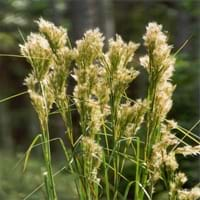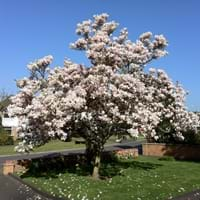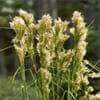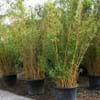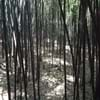Life Span
Perennial
Perennial
Origin
Caribbean, Central America
Hybrid origin
Types
Broomsedge Bluestem, Broomsedge
Gwillimia, Manglietia, Kmeria
Habitat
ditches, Grassland, Moist Ditches, Moist Soils, Roadsides
Subtropical climates, Tropical regions
USDA Hardiness Zone
5-9
6-9
Sunset Zone
H1, 3a, 3b, 4, 5, 6, 7, 8, 9, 14, 15, 16, 17, 18, 19, 20, 21, 22, 23, 24
Not Available
Habit
Upright/Erect
Oval or Rounded
Flower Color
Cream, Green, White
Purple, Pink, Light Pink, Rose
Flower Color Modifier
Bicolor
Bicolor
Fruit Color
Not Available
Brown
Leaf Color in Spring
Green, Blue Green
Green
Leaf Color in Summer
Light Green
Green
Leaf Color in Fall
Gray Green, Yellow green, Bronze
Green, Yellow green, Sandy Brown
Leaf Color in Winter
Gold, Tan, Bronze
Not Available
Leaf Shape
Grass like
Ovate
Plant Season
Fall, Winter
Spring, Summer
Sunlight
Full Sun, Partial Sun
Full Sun, Partial Sun
Growth Rate
Medium
Medium
Type of Soil
Clay, Loam, Sand
Clay, Loam, Sand
The pH of Soil
Acidic, Neutral, Alkaline
Acidic, Neutral
Soil Drainage
Average
Well drained
Bloom Time
Late Summer, Early Fall, Fall, Late Fall, Early Winter
Spring, Late Spring
Tolerances
Not Available
Not Available
Where to Plant?
Ground
Ground
How to Plant?
Root Division, Seedlings
Seedlings, Transplanting
Plant Maintenance
Medium
Medium
Watering Requirements
Keep ground moist, Water Deeply
Prefer drip-irrigation instead of Over-head watering
In Summer
Lots of watering
Lots of watering
In Spring
Moderate
Moderate
In Winter
Average Water
Average Water
Soil pH
Acidic, Neutral, Alkaline
Acidic, Neutral
Soil Type
Clay, Loam, Sand
Clay, Loam, Sand
Soil Drainage Capacity
Average
Well drained
Sun Exposure
Full Sun, Partial Sun
Full Sun, Partial Sun
Pruning
Cut or pinch the stems, Remove damaged leaves, Remove dead branches, Remove dead leaves
Prune if you want to improve plant shape
Fertilizers
All-Purpose Liquid Fertilizer
Fertilize in late fall, fertilize in spring, Requires high amount of nitrogen
Pests and Diseases
Red blotch
Aphids, Bacterial Blight, Canker, Crown gall, Hoplia beetle, Leaf burn, Leaf spot, Mealybugs, Powdery mildew, Red blotch, Scorch, Soft scales, Thripes, Wetwood
Plant Tolerance
Drought
Not Available
Flower Petal Number
Single
Single
Foliage Texture
Coarse
Coarse
Foliage Sheen
Matte
Matte
Attracts
Birds, Butterflies
Not Available
Allergy
Not Available
Not Available
Aesthetic Uses
Ground Cover
Showy Purposes
Beauty Benefits
Not Available
Treatment of Dark Spots
Environmental Uses
Air purification, Food for animals, Food for birds, Provides ground cover, Wildlife
Air purification
Medicinal Uses
Not Available
Alzheimer’s Disease, Anxiety, Cancer, Digestion problems, Liver problems, Menstrual Cramps, Respiratory Disorders, Weight loss
Part of Plant Used
Seeds
Whole plant
Other Uses
Used as Ornamental plant
Used as Ornamental plant, Used for its medicinal properties
Used As Indoor Plant
No
Yes
Used As Outdoor Plant
Yes
Yes
Garden Design
Container, Dried Flower/Everlasting, Feature Plant, Mixed Border, Rock Garden / Wall
Feature Plant, Foundation, Shade Trees
Botanical Name
ANDROPOGON glomeratus
MAGNOLIA 'Alexandria'
Common Name
Bushy Beardgrass, Bushy Bluestem, Bushy Broom Grass
Alexandria Magnolia, Magnolia
In Hindi
Bushy Bluestem plant
हिम चम्पा
In German
Bushy Bluestem Pflanze
Magnolienbaum
In French
plante buissonnante Bluestem
magnolia
In Spanish
planta arbustiva andropogon
árbol de magnolia
In Greek
φυτό θαμνώδη BLUESTEM
Magnolia δέντρο
In Portuguese
planta arbustiva Bluestem
magnólia
In Polish
Krzaczaste Bluestem roślin
magnolia drzewa
In Latin
Bushy bluestem herba
Magnolia lignum
Phylum
Magnoliophyta
Magnoliophyta
Class
Liliopsida
Magnoliopsida
Order
Cyperales
Magnoliales
Family
Poaceae
Magnoliaceae
Genus
Andropogon
Magnolia
Clade
Angiosperms, Commelinids, Monocots
Angiosperms, Magnoliids
Tribe
Andropogoneae
Not Available
Subfamily
Panicoideae
Not Available
Importance of Bushy Bluestem and Magnolia Tree
Want to have the most appropriate plant for your garden? You might want to know the importance of Bushy Bluestem and Magnolia Tree. Basically, these two plants vary in many aspects. Compare Bushy Bluestem and Magnolia Tree as they differ in many characteristics such as their life, care, benefits, facts, etc. Every gardener must at least have the slightest clue about the plants he wants to plant in his garden. Compare their benefits, which differ in many ways like facts and uses. The medicinal use of Bushy Bluestem is Not Available whereas of Magnolia Tree is Alzheimer’s Disease, Anxiety, Cancer, Digestion problems, Liver problems, Menstrual Cramps, Respiratory Disorders and Weight loss. Bushy Bluestem has beauty benefits as follows: Not Available while Magnolia Tree has beauty benefits as follows: Not Available.
Compare Facts of Bushy Bluestem vs Magnolia Tree
How to choose the best garden plant for your garden depending upon its facts? Here garden plant comparison will help you to solve this query. Compare the facts of Bushy Bluestem vs Magnolia Tree and know which one to choose. As garden plants have benefits and other uses, allergy is also a major drawback of plants for some people. Allergic reactions of Bushy Bluestem are Not Available whereas of Magnolia Tree have Not Available respectively. Having a fruit bearing plant in your garden can be a plus point of your garden. Bushy Bluestem has showy fruits and Magnolia Tree has no showy fruits. Also Bushy Bluestem is not flowering and Magnolia Tree is not flowering . You can compare Bushy Bluestem and Magnolia Tree facts and facts of other plants too.
